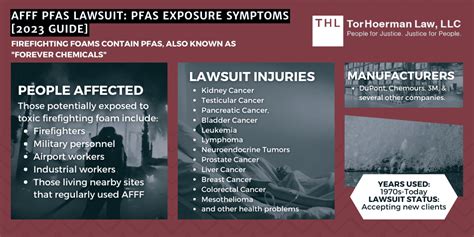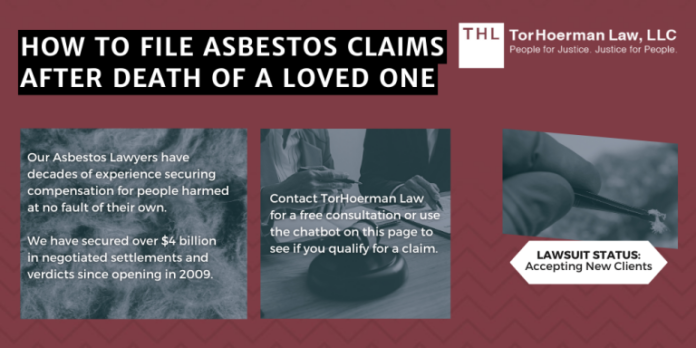Wrongful death lawsuits are a crucial aspect of civil litigation, addressing instances where negligence or misconduct leads to the untimely death of an individual. These cases not only seek justice for the deceased but also provide financial compensation to the surviving family members. Understanding the complexities of wrongful death claims involves exploring key legal definitions, criteria, and the strategies employed by attorneys to navigate these challenging cases. This article delves into notable wrongful death cases, analyzing the legal strategies used and the verdicts achieved. By examining precedent-setting cases and the lessons they offer, we aim to provide valuable insights for those considering or involved in wrongful death lawsuits.
alijyun.com will provide a detailed exploration of this topic.
1. Introduction to Wrongful Death Lawsuits
Wrongful death lawsuits arise when an individual’s death is caused by the negligence or wrongful conduct of another party. These lawsuits provide a legal avenue for surviving family members to seek compensation for their loss and to hold the responsible party accountable. The key purpose of wrongful death claims is to address the financial and emotional damages suffered by the deceased’s dependents. These claims can arise from various situations, including medical malpractice, car accidents, and workplace incidents. To pursue a wrongful death lawsuit, plaintiffs must establish that the death was caused by the defendant’s negligence, and that the surviving family members have suffered as a result. Understanding the intricacies of these cases, including the legal criteria and the strategies used by attorneys, is essential for navigating the complex legal landscape and achieving justice for the deceased and their loved ones.

2. Key Legal Definitions and Criteria
In wrongful death lawsuits, several key legal definitions and criteria are essential for establishing a claim. Wrongful death refers to a death caused by another party’s negligence, misconduct, or wrongful act. To pursue such a claim, plaintiffs must demonstrate negligence, which involves proving that the defendant had a duty of care to the deceased, breached that duty, and caused the death through their breach. Additionally, causation must be established, showing that the defendant’s actions directly led to the death. Damages are also critical, encompassing financial losses, emotional suffering, and other impacts on the surviving family members. Legal standing to file a wrongful death claim typically includes spouses, children, or other dependents of the deceased. Understanding these definitions and criteria helps in navigating the complexities of wrongful death lawsuits and ensures that the claim meets the necessary legal requirements for a successful resolution.

3. Overview of Notable Wrongful Death Cases
Examining notable wrongful death cases provides valuable insights into how these lawsuits are handled and adjudicated. One landmark case is Wilson v. McCarthy, where a hospital was held liable for the wrongful death of a patient due to medical malpractice. The jury awarded substantial damages after proving that the hospital’s negligence directly led to the patient’s death. Another significant case is Johnson v. Smith Automotive, which involved a fatal car accident caused by a defective vehicle part. The court ruled in favor of the deceased’s family, highlighting the manufacturer’s responsibility for ensuring product safety.
In Doe v. City of Metropolis, a municipal entity was found liable for a wrongful death resulting from inadequate road maintenance. This case underscored the duty of public entities to maintain safety standards. Lastly, Miller v. Big Pharma Corp illustrated the complexities of pharmaceutical negligence, where the pharmaceutical company was held accountable for a defective drug that caused fatal adverse effects.
These cases not only set precedents in wrongful death law but also illustrate the varied contexts in which these lawsuits arise, emphasizing the importance of thorough legal strategies and clear evidence in achieving justice for the deceased and their families.

4. Common Legal Strategies Employed
In wrongful death lawsuits, several common legal strategies are employed to build a strong case. Establishing negligence is foundational, requiring plaintiffs to prove that the defendant owed a duty of care, breached that duty, and caused the death through their actions. Gathering evidence is crucial, involving the collection of medical records, accident reports, and witness testimonies to support claims of negligence and causation.
Expert testimony is often used to provide professional opinions on medical standards, accident reconstruction, or product safety, helping to clarify complex aspects of the case for the court. Demonstrating damages involves showing the financial and emotional impact of the death on the surviving family members, including lost income, funeral expenses, and emotional suffering.
Settlement negotiations are also a key strategy, where parties may seek to resolve the case outside of court to avoid the uncertainties of a trial. In some instances, pre-trial motions can be filed to dismiss or narrow the scope of the case. Each strategy aims to strengthen the plaintiff’s position and increase the likelihood of a favorable verdict or settlement, ensuring justice for the deceased and their loved ones.
5. Detailed Analysis of Case Verdicts
A detailed analysis of case verdicts in wrongful death lawsuits highlights how courts determine liability and compensation. In Wilson v. McCarthy, the verdict was influenced by clear evidence of medical negligence and the hospital’s failure to meet standard care practices. The jury awarded significant damages for both economic losses and emotional suffering, setting a precedent for how hospitals are held accountable for medical errors.
In Johnson v. Smith Automotive, the court’s decision emphasized the manufacturer’s responsibility for producing safe products. The verdict included substantial compensation for the victim’s family, underscoring the importance of product safety and thorough testing. This case demonstrated how defective product claims are evaluated based on the manufacturer’s duty to ensure consumer safety.
The Doe v. City of Metropolis verdict revealed the liability of municipal entities for failing to maintain safe infrastructure. The court awarded damages for the victim’s family, highlighting the duty of public authorities to adhere to safety standards and prevent accidents.
In Miller v. Big Pharma Corp, the verdict showcased the complexities of pharmaceutical negligence, with the court holding the company accountable for failing to warn about severe side effects. The significant damages awarded illustrated the impact of drug-related wrongful death claims on pharmaceutical companies and their obligation to ensure drug safety. Each verdict reflects how the legal system addresses different facets of wrongful death claims, influencing future cases and legal standards.
6. Impact of Precedent-Setting Cases
Precedent-setting cases in wrongful death lawsuits have a profound impact on legal practices and future claims. For instance, the Wilson v. McCarthy case set a significant precedent by establishing stringent standards for medical negligence, influencing how courts assess healthcare providers’ duty of care and the extent of damages awarded. Similarly, Johnson v. Smith Automotive highlighted the responsibilities of manufacturers, shaping legal expectations for product safety and influencing how defective product claims are approached.
The Doe v. City of Metropolis case emphasized the accountability of municipal entities, establishing guidelines for public safety standards and liability. In Miller v. Big Pharma Corp, the precedent set by the case underscored the pharmaceutical industry’s obligation to provide comprehensive warnings about drug risks, affecting how future drug-related wrongful death claims are handled.
These landmark cases guide legal strategies, influence legislative changes, and impact how courts interpret wrongful death claims, ultimately contributing to the evolution of legal standards and practices in this area.
7. Lessons Learned from Each Case Study
Each notable wrongful death case provides critical lessons that shape future legal strategies and understanding. From Wilson v. McCarthy, the key takeaway is the importance of rigorous evidence in establishing medical negligence. The case underscores the need for comprehensive documentation and expert testimony to substantiate claims of failure to meet standard care practices, highlighting the significant role of thorough case preparation.
Johnson v. Smith Automotive teaches the necessity of holding manufacturers accountable for product safety. The case illustrates how detailed evidence of defects and their consequences can lead to substantial compensation for victims’ families, stressing the importance of rigorous product testing and safety standards.
In Doe v. City of Metropolis, the lesson is the critical role of public safety and maintenance. It highlights the legal obligations of municipal entities to uphold safety standards and the impact of their failure on wrongful death claims, emphasizing the need for regular inspections and proactive measures to prevent accidents.
Miller v. Big Pharma Corp shows the complexities of pharmaceutical liability, demonstrating how clear warnings and safety information are crucial. The case teaches the importance of transparent communication about drug risks and the legal consequences of failing to provide adequate warnings, impacting how future pharmaceutical negligence cases are pursued.
8. Legal Advice for Pursuing Wrongful Death Claims
When pursuing a wrongful death claim, seeking experienced legal advice is crucial for navigating the complexities of the case. Start by consulting with a lawyer who specializes in wrongful death lawsuits, as they can provide expert guidance on the legal process and help establish the validity of your claim. It is essential to gather and preserve all relevant evidence, including medical records, accident reports, and witness statements, to build a strong case.
Understanding the legal criteria for negligence, causation, and damages is vital. Your attorney will help demonstrate that the defendant’s actions directly caused the death and that your family has suffered significant losses. Additionally, be prepared for the possibility of settlement negotiations. Many wrongful death claims are resolved outside of court, and having a skilled lawyer can help you negotiate a fair settlement.
Ensure you are aware of any time limitations for filing your claim, known as the statute of limitations, as delays can affect your ability to seek compensation. By following these steps and working closely with a legal professional, you can enhance your chances of achieving a favorable outcome in a wrongful death lawsuit.
Wrongful death lawsuits are complex but essential for securing justice and compensation for families affected by negligence or misconduct. By understanding key legal definitions, examining notable case studies, and employing effective legal strategies, plaintiffs can navigate these challenging cases more effectively. The impact of precedent-setting cases and the lessons learned from them provide valuable insights. With the right legal advice and thorough preparation, pursuing a wrongful death claim can lead to a just resolution for the deceased and their loved ones.
alijyun.com

